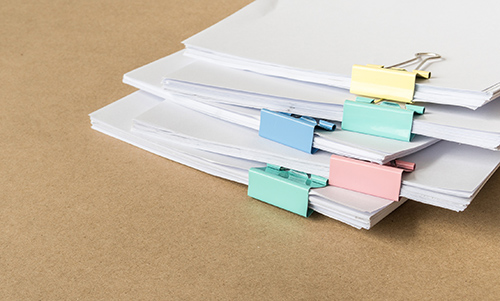Patents: account of profits
Summary
The Court of Appeal has provided guidance for apportioning profits from a patent infringement where the patented item is sold as part of a larger product, and in relation to the deduction of overheads from the infringer’s profits.
Background
A patentee may claim against an infringer for an account of the profits derived by him from the infringement (section 61(1)(d), Patents Act 1977).
Apportionment would not be appropriate where, without the infringement, the infringing articles would not have existed, or if the invention was an essential ingredient in the creation of the infringer’s whole product. In Dart Industries Inc v Decor Corp Pty Ltd and another the High Court of Australia held that the issue of apportionment of overheads and their deduction from gross profits from the infringement depended on whether the infringer would still have a sustainable business if it was not making the infringing products, that is, if it was making and selling only non-infringing products ([1994] FSR 567, approved in Hollister Inc Dansac AS v Medik Ostomy Supplies Ltd [2012] EWCA Civ 1419).
Unless there are exceptional circumstances, the court should not permit a party to submit at a hearing for an account of profits material that has not been ordered at the case management conference (Civil Procedure Rule 62.23) (CPR 62.23).
Facts
A sued D for patent infringement in relation to snap-in display panels used in shops.
The Intellectual Property Enterprise Court (IPEC) held that the patent was valid and had been infringed by D. A elected for an account of profits. D appealed the IPEC judgment on account of profits.
Decision
The court held that the IPEC had misdirected itself on both the principles of apportionment of profit and on the deduction of overheads, and remitted the case to the IPEC.
An account of profits was limited to profits actually made in order to prevent the defendant’s unjust enrichment. In order to quantify the extent to which the infringer would be unjustly enriched if he were to retain the profits of the infringement, the account had to:
- Identify the patentee’s invention.
- Decide what (if any) profits the infringer derived from the use of that invention. This could be difficult where the infringer sold products associated with the subject matter of the patent (convoyed goods) or products into which the subject matter of the patent was incorporated.
Regarding the identification of the invention, the claim here was for display panels with slots for snap-in inserts, with the characterising section of the claim relating to the composition and structure of the inserts. The issue was whether profits on the sale of panels used with the infringing inserts were to be included in the account. For the purpose of an account of profits, the scope of the invention was not necessarily the same as the scope of the claims. The IPEC had found that the inventive concept was the composite idea of an insert made of metal and having a particular shape and interacting with the slot of the panel in a particular way, so that the metal insert could snap into the panel.
Having identified the inventive concept, the court considered the question of causation. Whether an infringement had caused a loss for the purpose of assessing damages and whether the infringer had derived a profit from the infringement were different questions.
The IPEC had incorrectly stated that because the sale of panels and inserts went together, the sale of inserts caused the sale of the panels. However, the fact that the sales went together was not sufficient to establish that the whole profit from the composite item was derived from the invention. The facts did not suggest that the infringing insert was the essential ingredient in the creation of D’s whole incorporated panel. Therefore, because it was possible that some panels with infringing inserts might be sold to customers who were indifferent to the type of inserts used, and, although the panels could have been made compatible with the infringing inserts, they might also have been compatible with non-infringing inserts, the IPEC should have apportioned the overall profit. The question of apportionment was therefore remitted to the IPEC, although it could still find as a fact that the infringing insert was the essential ingredient of the incorporated panel.
Following Hollister, an allowance for overheads would not be permitted where the overheads would have been incurred anyway even if the infringement had not occurred; and the sale of infringing products would not have been replaced by the sale of non-infringing products. The IPEC had found that, in effect, the same overheads would have been incurred in the sale of non-infringing products, so if it had not been selling infringing products D would have used the same overheads in generating profits by lawful trading. D’s argument was legally correct if the asserted facts were established, but, because the argument had been rejected on legal grounds, the facts had not been proved.
The IPEC was also wrong to find that running to maximum capacity was a threshold condition for apportionment of overheads and that it had to have the consequence that alternative business was displaced. If an infringer had spare, unused capacity then a tribunal might be sceptical about his evidence to the effect that had he not been infringing he would have used his overheads to support a non-infringing line of business. So the decision on overheads could not stand.
Comment
The difficulties caused by apportionment are one reason why successful patent owners in infringement litigation tend to elect an award of damages rather than an account of profit, unless the latter is likely to result in a significantly larger award. This problem is particularly acute where the actual invention may only relate to part of the product as sold. Although this decision helps to clarify the principles, they still require difficult findings of fact, a particular problem in IPEC proceedings where disclosure, time for hearings and costs are all limited.
If the IPEC finds that the circumstances of this case were not exceptional and CPR 62.23 does not apply, then it will have to reach a conclusion on the basis of the material before it. This will mean that D, on whom the evidential burden falls, will not be able to submit any further evidence.
Case: Design & Display Ltd v Ooo Abbott and another [2016] EWCA Civ 95.
First published in the April 2016 issue of PLC Magazine and reproduced with the kind permission of the publishers. Subscription enquiries 020 7202 1200.


